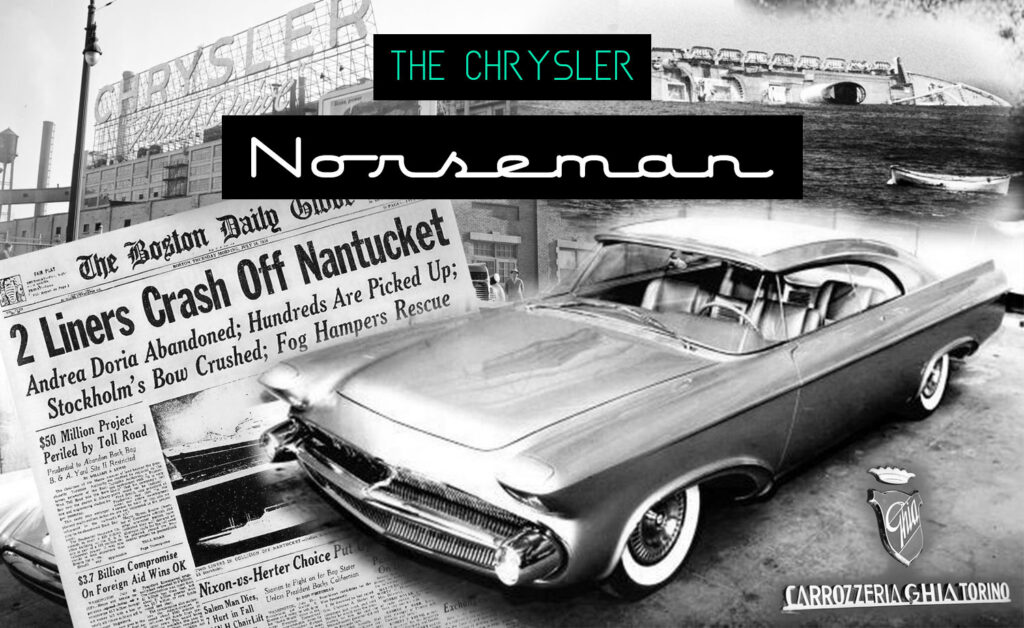
The Chrysler Norseman, a concept car from 1956 that never made its debut at any car show, was tragically involved in the sinking of the Italian ocean liner Andrea Doria on July 26, 1956. This unfortunate event claimed the prototype along with many others, marking a significant chapter in automotive history.
The origin
Chrysler’s idea was to create a car without A-pillars for the 1957 exhibitions, the prototype project was developed in October 1954 by the American stylist Virgil Exner, a member of the Chrysler Advanced Styling Group, at the Centro Stile Ghia di Torino based on the Lincoln Futura.

The Design of the Chrysler Norseman
The project for the large four-seater experimental Coupé had started in October 1954 and a 1:4 scale model had been sent to Italy for Carrozzeria Ghia as reference for a running model for display. The complexity of the forms, of the technical and stylistic solutions occupied the workers who worked in Corso Unione Sovietica for almost 15 months; it is likely that Pietro Frua, then head of the Ghia style center, was kept out of the operation.
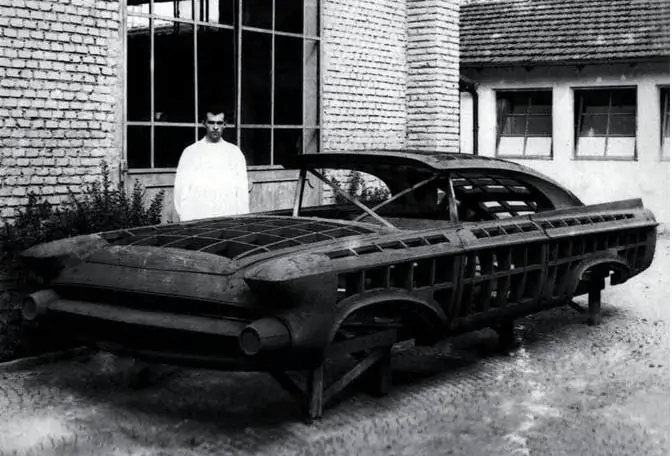
The Chrysler Norseman featured many innovative technical solutions for the time. All major body panels on the car were made of aluminum as a result of research in advanced structural techniques to reduce weight. It had a sharply sloping hood, upswept tail fins and a covered, smooth underbody for aerodynamic efficiency. The chief designer of the technical office Sergio Coggiola was part of the working group of Ghia, who in 1966 founded its own company and to whom we owe the resolution of the biggest problem: that of creating a roof which had no posts or pillars. This was accomplished by means of structural cantilever archs which curved upward from the rear of the frame and over the passenger compartment of the car. Glass surrounding the passenger compartment was uninterrupted (using the Vistotal system, already seen on Castagna’s models) with the exception of the two archs of steel curving upward in the rear. The same criticality was faced by Coggiola for the construction of the Ferrari 212 Inter “Uovo”, built by Carrozzeria Fontana for the driver Giannino Marzotto for the 1951 Mille Miglia. In addition there was a 12 square foot panel of glass in the roof that was power operated and slid forward leaving the roof over the rear seat area open.
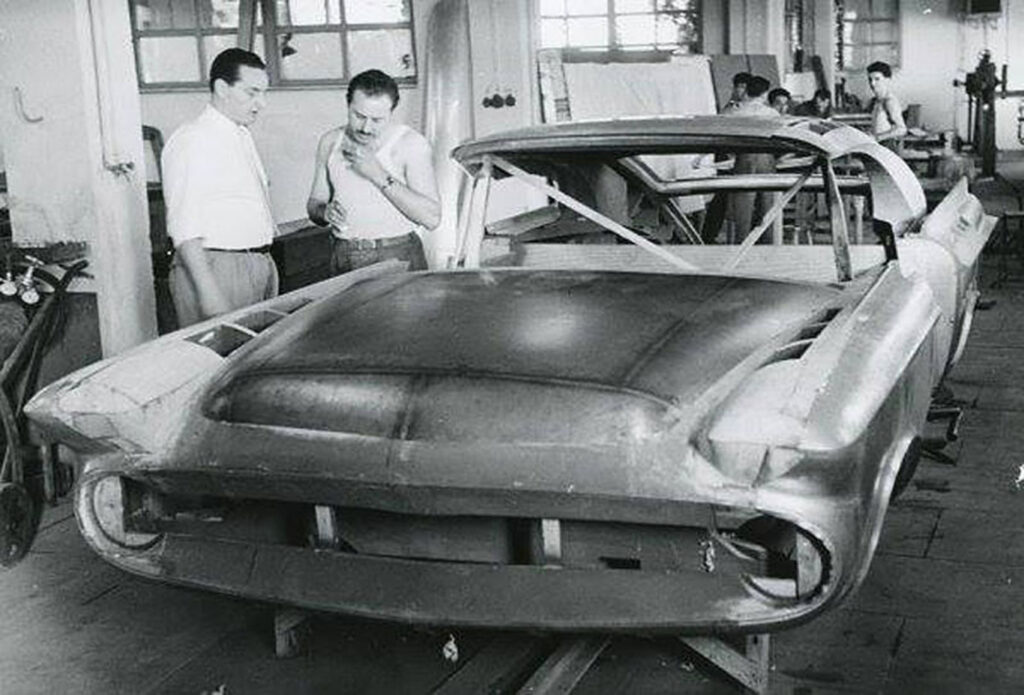
Over-all the smoothness of the car was enhanced by concealed automatic headlights, door handles, and concealed trunk lid opening device. Other innovations modern for the time, were the powered adjustable seats, automatic petrol cap, the PowerFlite automatic gearbox with steering wheel controls used in all Imperial cars, interior lighting with diffused light and the radio integrated in the central tunnel of the dashboard. Color of the car was two-tone metallic green with a touch of red inside the flared wheel openings.
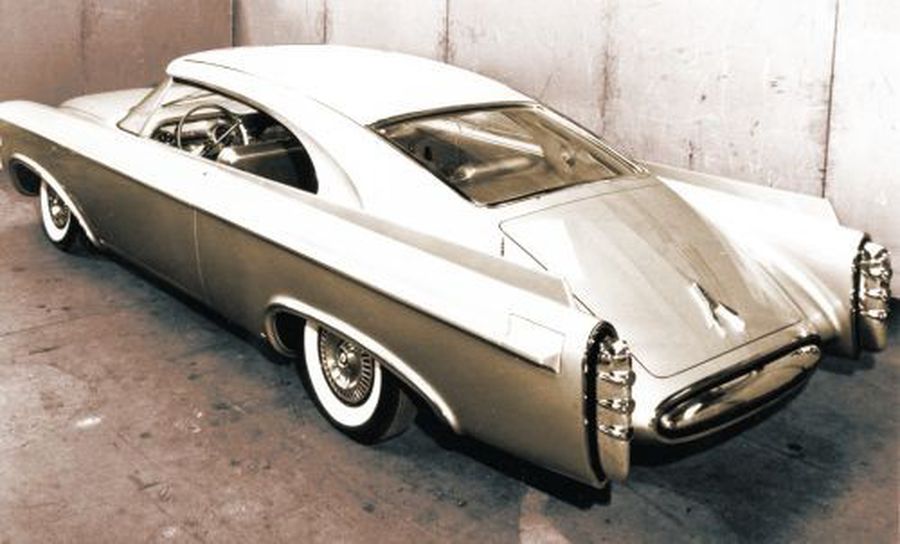
5.8 meters long, 2 wide and 1.4 high, the Chrysler Norseman did not boast major mechanical innovations, being equipped with a classic V8 Hemi of 5.4 liters and 235 hp similar to that mounted on the Chrysler 300C in 1957.
The disaster
On July 26, the ocean liner Andrea Doria tragically sank after being rammed by the Swedish ship Stockholm, taking dozens of lives and the Chrysler Norseman concept car to the bottom of the sea. Chrysler issued an official statement the same day, mourning the loss of the car, which was never rebuilt or unveiled to the public, and was never put into production. However, another concept car, the Ford Bimini, was spared from this fate. Though it was nearly loaded onto the Andrea Doria, it was not on the ship when it sank.
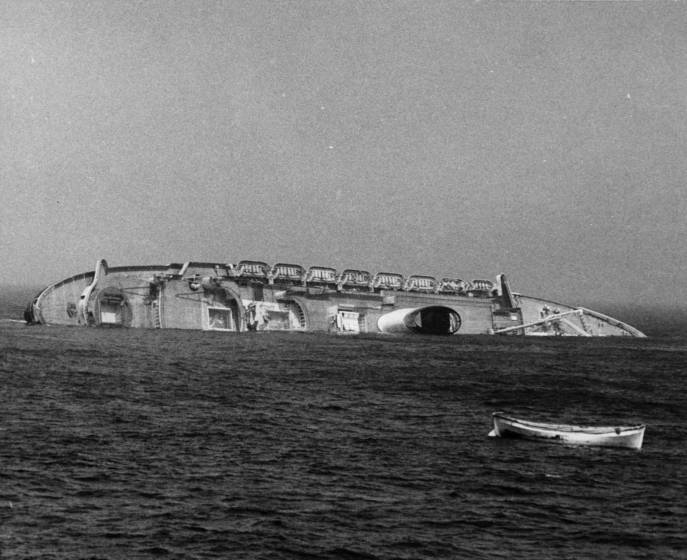
Turin coachbuilder Ghia in 1961 resumed its line and many of the technical solutions for the construction of the Dodge Flitewing and Chrysler TurboFlite concept cars.
But Chrysler never used the cantilevered roof design in any subsequent vehicle.
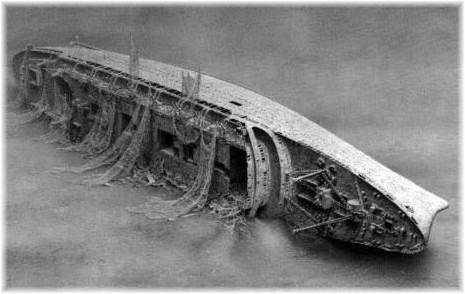
Despite numerous attempts to bring to the surface the treasures sunk with the Andrea Doria, it has not yet been possible to recover it from the hold of the wreck.
The Chrysler Norseman today
After almost 65 years, the Norseman is probably not there anymore, under 75 meters of water on the bottom of the Atlantic off the coast of Massachusetts (40 ° 30′N 69 ° 53′E / 40.5 -69.883).
A diver named Bright was one of the last people to pay homage to the Norseman in 1994. As he stated, the car was in cargo hold number 2 packed in a crate which had completely disintegrated, leaving the Norseman in very poor conditions. The tires were the only element which helped with the cars identification. Considering that 25 years have passed, no one else will be lucky enough to see the remains of this prototype involved in this tragedy.


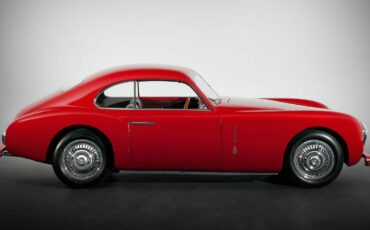
Such a sad story, The cantilevered roof was the highlight
its a pitty Ghia didn’t tried to rebuilt it, i mean, insurances do exist back in the day right?